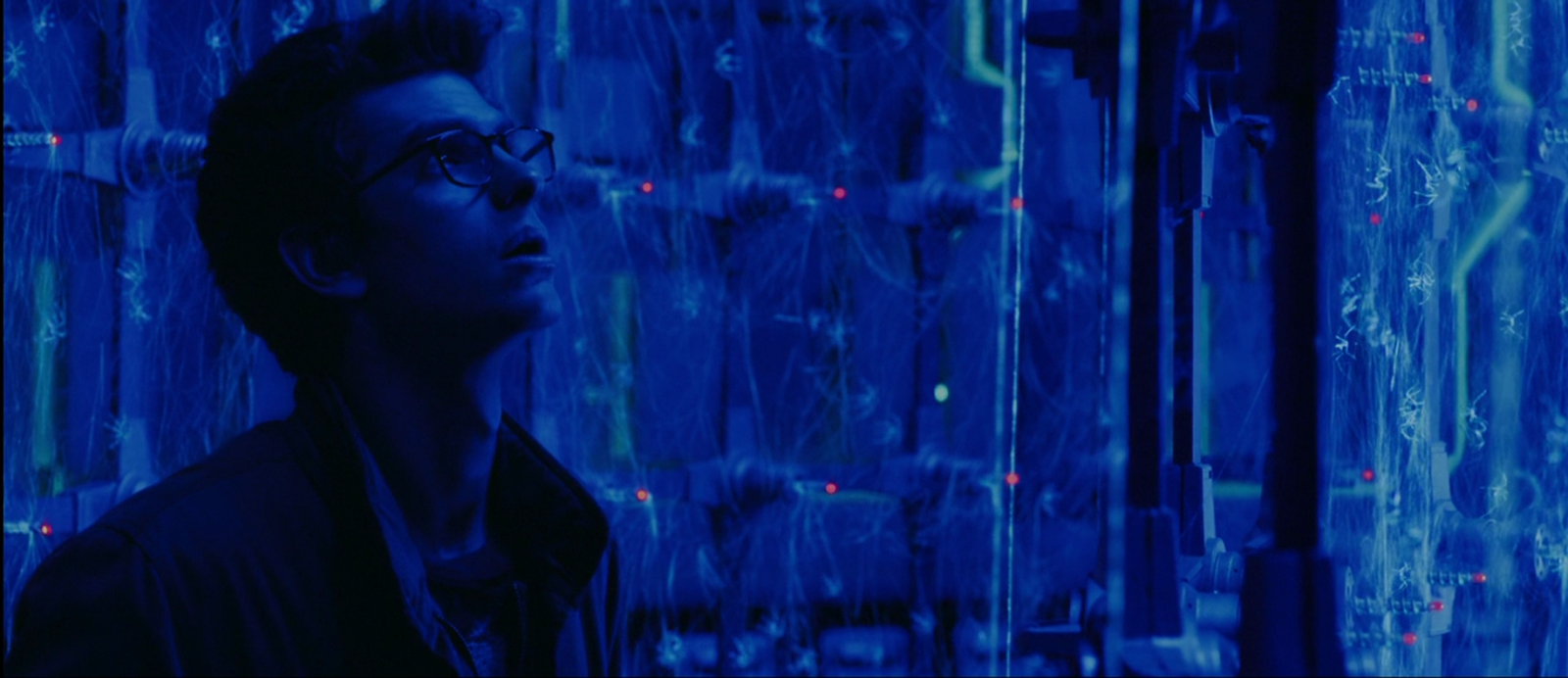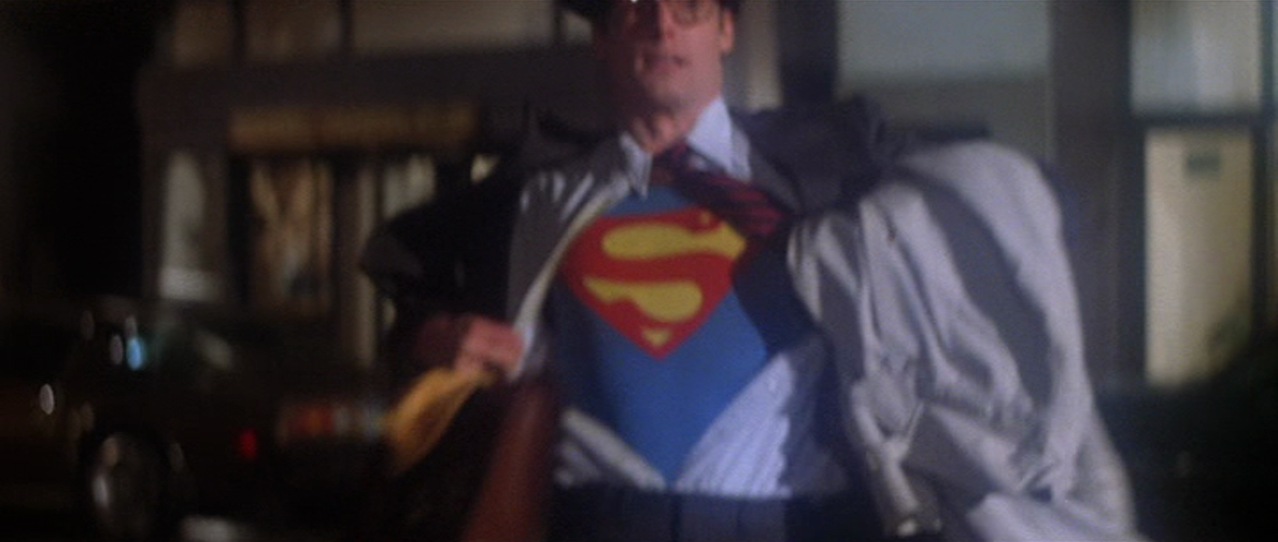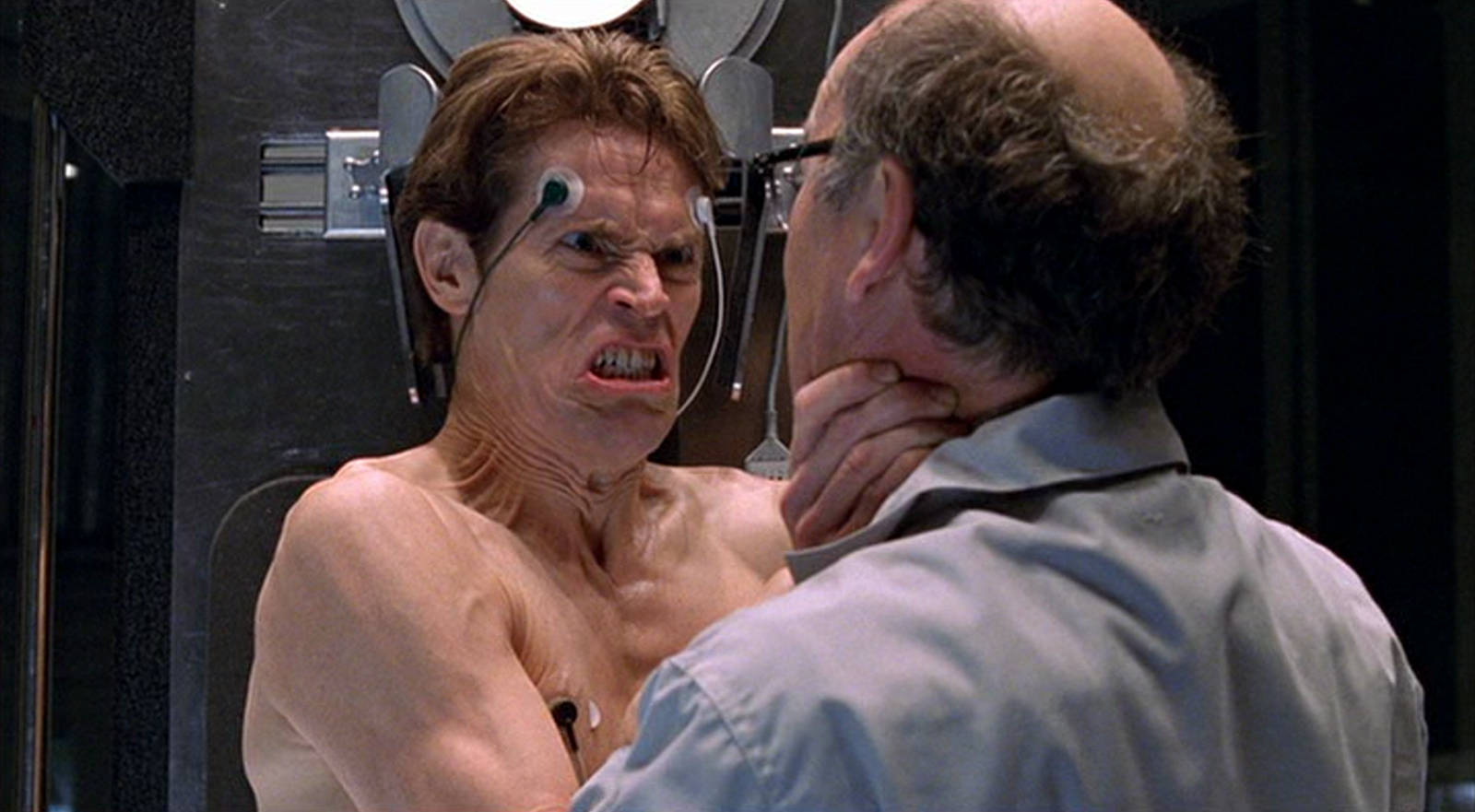It may seem hard to believe, but Raimi's original Spider-Man turned 12 years old just this
month. Harder still when you realize his entire Spider-Man trilogy lasted only five years, from 2002-2007.
Together, they've grossed over $2.4 billion at the box office worldwide. They
undoubtedly did their part to shape the current Comic Book Movie climate as we
know it. And yet, since the 2012 reboot, some of Raimi's choices have been
called into question, in particular his decision to skimp on the grittier, more
psychological aspects of the character.
To which I say: Whaaaat?
I don't know about you, but "gritty" and "psychological"
are not the words I generally associate with the Spider-Man I grew up with as a
kid. "Colorful" and "a little cornball"? Yes. "The
ultimate teenage wish fulfillment fantasy"? Absolutely. This is not to say
that Marc Webb's rejiggered Spider-Man series is totally without merit - as if
any single representation of the character is ultimately the correct one.
Anyone who insists it is somehow "truer" to the concept of Stan Lee
and Steve Ditko's web-slinging superhero, though, has been seriously
misinformed.
Yes, I know. We've already covered this at some length before.
But with The Amazing Spider-Man 2 now
heating up theater screens both here and abroad, I thought it could bear a
closer look. It is particularly absurd to suggest, as many people do, that
Raimi's films failed to capture the essence of the original Marvel comics. The
bright and bouncy colors, for example, shown here in Amazing Fantasy #15 (Spidey's debut issue), and then in Spider-Man '02:
Raimi's Spider-Man follows the plot of Amazing Fantasy pretty much to a tee. In both, Peter Parker, high school nerd, just happens to attend a science exhibit where he just happens to be bitten by a poisonous spider that's been infected there:
No longer a victim of pure happenstance, the Peter Parker of TASM is a mopey, reclusive teenager whose obsession with finding out The Truth about his parents' deaths leads him directly to OsCorp, where his father bred the specific type of spider that would eventually endow Peter with superpowers:
The climax of SM '02, in which the Green Goblin deduces Spider-Man's identity and kidnaps Mary Jane to lure him into a trap, mimics one of the most revered comic titles of all time, 1973's "The Night Gwen Stacy Died." The difference being, of course, that the movie swaps out Gwen for Mary Jane and Peter is able to save both her and an entire tram- load of screaming children:
Peter's resulting confrontation with the Goblin is also a direct steal from the comics - allowing our hero to "kill" the villain without actually killing him. Here, Norman Osborne/Goblin is outwitted during battle and impaled by his own glider:
Never mind, too, that Raimi's films go out of their way to copy some of Spidey's most iconic poses from the comics:
The Amazing
Spider-Man does the same, but to what extent? What are the filmmakers
trying to accomplish here that Raimi and his compatriots did not? You could
argue these classic Spidey poses are essential to the character and our mental
association with him. But if that's the case, why reboot? What purpose does it
serve to revisit the same ideas and basic story points when you've got decades of comic book lore at your disposal?
What's odd is that both sets of films share the same producers
(Avi Arad, Kevin Feige, Laura Ziskin) and even, four times out of five, the same
screenwriter (Alvin Sargent, who worked uncredited on the 2002 film), as if
stuck on a permanent cycle of rinse, lather, repeat. As a result, some of the same
scenes are recycled in distressingly different ways. Flash Thompson's eventual
comeuppance, for example, in the hallways of Midtown High School in 2002, and
then on the basketball court ten years later:
Or a scene in which practically half the city of New York comes
to Spidey's rescue, played first in Raimi's film (with obvious 9/11 overtones),
and again in the reboot:
SM '02's
triumphant final shot, of Spidey swooping majestically through the skyscrapers of New York City, obviously can't be repeated for TASM, so Webb has him swing through some
dark back alleyways instead. This is not, as they say, an improvement.

Even The Amazing Spider-Man 2 is forced to eat Raimi's table scraps - and Superman's, too. Here, Gwen Stacy takes a perilous plunge - only not from a bridge, because they already did that, but from the inside of an impossibly high clock tower:
The above shot also seems to be a repeat of an earlier one from Spider-Man 3 (2007), in which Gwen takes a similar fall:
In Superman II (1980), after a particularly heroic Niagara Falls rescue, the Man of Steel ducks behind a hot dog stand to change into his alter ego Clark Kent:
Spidey does relatively the same thing in TASM2, although, just for variety, he swings in from the opposite direction, and neglects to remove a fairly important piece of his costume once he emerges from the other side:
In all fairness, Raimi's trilogy does its share of scene-stealing as well, mostly from other superhero movies. Like these shots, cribbed from Raimi's own Darkman (1990):
Spidey does relatively the same thing in TASM2, although, just for variety, he swings in from the opposite direction, and neglects to remove a fairly important piece of his costume once he emerges from the other side:
In all fairness, Raimi's trilogy does its share of scene-stealing as well, mostly from other superhero movies. Like these shots, cribbed from Raimi's own Darkman (1990):
Spider-Man 2 (2004) not only plays like a sleeker, more elegantly-structured remake of the original movie, it also copies a major plot point from Superman II, in which our hero gives up his powers for the sake of the woman he loves*:
Not to be outdone, Spider-Man 3 looks to Superman III (1983) for its source of inspiration. Both center around a mysterious substance that tempts the hero, turning him into something he's not:
Speaking of which, everyone seems to have it in for Emo Peter Parker, with his slicked-down hair that falls limply across his forehead. Yet no one seems to have a problem with this:
Harry Osborn's transformation into the Goblin, by the way, isn't the only character arc to appear more than once in both sets of films. The father figure/mentor-turned-arch-enemy trope rears its ugly head (literally) three times:
And then there's Electro, whose turn from doofus-with-a-serious-case-of-hero-worship to maniacal-supervillain-bent-on-revenge is a ripoff of none other than the Riddler from Batman Forever (1995):
At this point, I'm beginning to wonder if the makers of these modern-day Spider-Man movies have an original idea in their heads. Either that or they're blissfully unaware of their Comic Book Movie history. It's hard to say which is worse.
And what of the actors? How do they compare to their comic book counterparts? Tobey Maguire, I'll admit (nor Andrew Garfield, for that matter), looks next to nothing like the Peter Parker of Amazing Fantasy, drawn by Steve Ditko like a square-jawed 30 year old with Clark Kent glasses. Aunt May and J. Jonah Jameson fare better, embodied in Raimi's trilogy by the great Rosemary Harris and irascible J.K. Simmons:
In the reboot, May gets significantly de-aged, played by the equally great (and decidedly darker-haired) Sally Field. You tell me which actress looks like she stepped right off the comic page:
Jameson, on the other hand, is neither seen nor heard in either
of Webb's films, mainly because the director had no idea how to recast the part. Webb does promise that The Daily Bugle's
cigar-chomping boss man will make an appearance in The Amazing Spider-Man 3, but again,
what's the point? So we can sit down in front of theater screens again in four years and
compare notes?
The fact is that Hollywood will continue to churn out remakes and
reboots as long as there's an audience for them; only you can send them the
message by continuing/refusing to buy a ticket. You can pick your poison, of
course. I don't know whether to cry about it or make poopy faces.

















































I totally agree with you. I remember when I first heard they were remaking Spiderman. I flipped out. Seriously way to make me feel old! These movies came out right after I graduated high school, how could they be remaking them already?! Somewhere in my mind I thought it was an unwritten rule that you can't remake a movie unless it's at least twenty years old. The only thing I like about the new reboot is that they actually start out with Gwen Stacey instead of jumping a head to Mary Jane. Personally I hated Kirsten Dunst as Mary Jane in the first trilogy. Toby McGuire was okay until he started to cry then I wanted to puke. I don't care one way or another for the new guy playing Peter Parker. I like the actor in his other work but he's just not Peter nor Spiderman to me. As for the new Harry Osborn, yuck! I love James Fronco so to me he was the perfect Harry plus he was very believable as Willem Dafoe's son, who also was brilliant in my opinion. Ultimately I think both stabs at Spiderman are flawed in their own ways, but I agree there really wasn't much point in redoing these films.
ReplyDelete